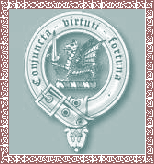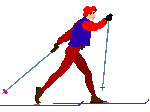

 MacBeth's
Winter Opinion
MacBeth's
Winter Opinion
...a frosty shelf in a small store
updated 11/27/05
Looking for books with a snowy theme? Click here!
We may have passed Christmas, but the whole of winter looms before us, seeming permanently gray and unyielding. For us in the north, nature study might take a back seat to reading--if we can't go out, we can curl up by the fire and read about the outdoors! But for those who can get out, a winter hike is wonderful. Here are some pictures of our day with cousins (and Aunty Rose!!) at Fort Revere, in Hull Massachusetts (with Boston's Harbor Islands in the background):
click here to view our frozen lake photos
Winter Activities

The winter nature hike is a glorious thing! Pull on your boots and jackets, and don't forget your hat! Here are a few hiking ideas, and some ideas for your winter back yard:
Hike a beach, lakeshore, or river bank (carefully!)
Visit the forest right after a snow
Be the first to hike a field after a snow
Make snow angels
Look for tracks near water sources
Try Nordic skiing
Go bird-watching early in the morning
Take an evening hike
Star-gaze
Take a "listening" hike--what do you hear?
Examine snow flakes (take your microscope outside so the flakes stay frozen)
Look for the "skeletons" of last summer's plants
Dig for tubers and roots:
Jerusalem artichokes
wild carrot (caution! must be positively identified)
leeks
evening primrose
wild potato
chicory
onions
field garlic
ground nuts
anise root
sassafras
wild ginger
curly dock
Taste fresh snow
Winter orienteering is a challenge! Try it!
Play "fox and geese," a game like "tag," on a circular, spoked track in the snow (directions in A Prairie Boy's Winter)
Make snow-shoes, and walk with them!
Look for winter berries--who eats them? Which berries are eaten last?
Look for last summer's nests
Cook outside and eat there too!
Learn fire building (read London's To Build a Fire)
Step outside during a blizzard (step inside quickly!)
Identify local trees by bark alone
Turn over your compost pile
Take the temperature of your yard--near the house, away from the house, the soil surface, under the soil, in the compost pile...
Hang different bird-seed types in different places--who likes what?
Hang suet for birds, too!
Provide shelter from elements for wildlife--bird houses, bat houses, brush piles, old logs, etc.
Keep a record of the weather
Tap maple trees in late winter--boil the watery sap into thick sugary syrup, ad pour it on ice cream, pancakes, or even snow!

How to catch space dust in the snow:
Every day, the earth gathers 100 tons of dust from space! You can easily catch an observe some of this minute invasion force, using simple household items--a coffee filter, oven, and a microscope (a magnifying glass may do, as space dust is fairly large), and a magnet. Since much of space dust is made up of iron, it is very magnetic! Even if you don't find space dust, you may be surprised by the amount of regular old dust in snow--even fresh clean snow!
Procedure:
Take a bit of fresh snow and place it on a coffee filter inside a cup (cone filters work best). Allow the snow to melt away, and let the filter dry (you may use a warm oven to aid this process). Examine any dust left behind.
How much is there? Can you see any large "dust?" Use a magnifying glass of a microscope to examine the specks. Space dust is roughly spherical, having melted on its journey through the atmosphere. Sometimes, space dust has a tiny "tail." Sometimes, especially if the dust contains nickel, it looks like Mickey Mouse--a tiny sphere with "ears." Use a magnet on the dust to determine if it contains iron.
Older students may wish to quantify the observation, by weighing the dust collected (use a fine, digital scale, available from Science Kit). Even earth dust is heavy, and while snow is naturally dusty, sitting snow will have an increased volume of dust. How much more concentrated does the dust sample become in one-day-old, two-day-old or week old snow? Cover some snow to protect it from gathering "new" dust. Does the volume of dust increase as the volume of snow decreases? Why?
Follow up reading:
More Winter science:
For more activities, try these books:
With Snowmen, go beyond the average "snow man" into a world where fireplaces are made of snow, where snow aliens land in your yard, and where the snow-deprived can enjoy a snowy scene. This book is spiral bound on heavy plastic coated paper for use outside...and your kids will use this again and again!
![]()
Winter Stories

Paul and his (home made) sail-sled head down hill!
See also--
Snowflake-Man (Bentley's biography--he was homeschooled!)
Snow Crystals (Bentley's opus)
- Owl Moon
- The Mitten
- The Tomten
- Hans Christian Andersen's The Snow Queen
Older kids:
- The Lion, the Witch, and the Wardrobe
Winter Holiday (Winter adventure of the Swallows and Amazons--heading for the "North Pole")
- Hans Brinker or the Silver Skates
Tired of Winter?
Warm up with Jason Project's study for this year: